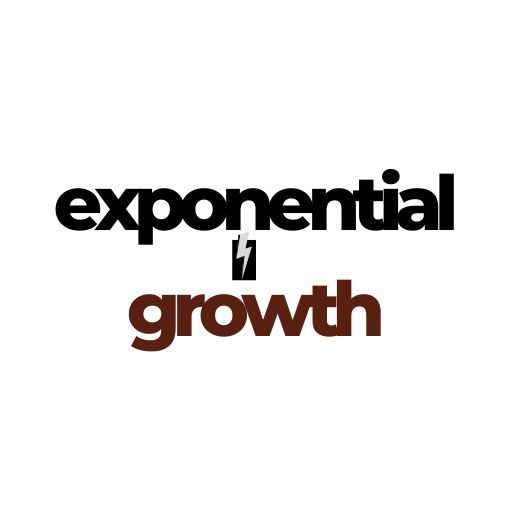- NPS in 2025: I am 40 and want to invest in NPS from next financial year. How should I plan my investment?
- Quilter’s WealthSelect boosts US equity allocation as Trump sugar rush anticipated
- Find Your Ideal Bitcoin Allocation
- The relentless advance of American asset managers in Europe
- The Best Flexible Strategies for Retirement Income
If you do not know how much you are paying in investment fees, if you’re being overtaxed or if your portfolio is effectively diversified, 2025 is a good year to figure it out
Article content
The new year is a good time to reassess your investments and prepare for the year ahead.
Article content
Article content
Here are four things you should be considering with your investment adviser if you have one, or on your own if you are a self-directed investor, so you can start the year off right.
Fees
The Canadian Investment Regulatory Organization is currently accepting comments on proposed rule amendments for enhanced cost reporting for investments by investment firms. The deadline is Jan. 8.
Advertisement 2
Article content
One of the main considerations is whether to introduce a “responsibility to report to their clients, on top of their own fees and charges, ongoing investment fund expenses and charges incurred by the client.”
You might be surprised by this since you have probably noticed fee disclosures on your investment statements since 2017. However, the disclosure requirements introduced at that time only required reporting of management fees directly charged by the investment firm or trailer fees paid by mutual fund companies to them. In some cases, this may only identify about half the fees paid by the investor.
Article content
Absent from the current mandatory disclosure is the management fee for a mutual fund or exchange-traded fund (ETFs). These tend to be in the one per cent range for most mutual funds and in the range of 0.1 per cent to 0.5 per cent for most ETFs.
Some investment firms report their all-in costs to investors already, but the majority only tell investors part of the story. Do you know how much you are paying? If not, you should.
Xem thêm : How To Make Best Use Of The Hybrid Funds?
I estimate the average investor in Canada pays a total of $2,000 annually per $100,000 invested, or two per cent per year. A competitive fee might be in the range of one per cent to 1.5 per cent.
Article content
Advertisement 3
Article content
There are diversified all-in-one ETFs with fees in the 0.2 per cent range, so if you are paying one or two percentage points more than that, or $1,000 to $2,000 more per year for every $100,000 invested, you should expect to get more than just investment management from your adviser, such as financial planning.
Performance
How did your investments do last year? The S&P 500 returned about 36 per cent in Canadian dollar terms and the S&P/TSX composite index returned about 22 per cent. If you had a comparable allocation to stocks in both the United States and Canada, your benchmark might have been about 29 per cent for the stock portion of your investments.
I met with a client recently who has two investment advisers. One had returned a few per cent more than the other, so, in their mind, the adviser with the higher return had done better and was more deserving of new deposits.
However, that adviser had nearly 100 per cent of their portfolio in stocks, while the other had only about 75 per cent. As a result, the adviser with the lower return had a better risk-adjusted return. If they had been 100 per cent in stocks, they might have done better.
Advertisement 4
Article content
Let’s say your investments returned 20 per cent in 2024. If you were in a 50/50 portfolio, that would be a pretty good return. If you were 100 per cent in stocks, you may have under-performed.
It is not the absolute return that matters, but the relative return compared to a benchmark. Despite the references to 2024 returns in this example, you should probably consider a longer time horizon than one year to evaluate your investments or your adviser. It is also very difficult to beat the benchmark over the long run. Most managers lag their benchmark due to their fees over the long run.
Tax efficiency
As an investor, you can do simple things to tilt the scale in your favour, particularly given you can only spend your after-tax returns. Here are a couple of examples.
If your tax-free savings account (TFSA) is not maxed out, and you have non-registered investments, you should contribute up to your available TFSA limit to benefit from tax-free growth. Some investors forgo TFSA contributions because their cash flow is insufficient to contribute.
Instead, consider selling non-registered investments to raise the cash or transferring investments “in kind” to your TFSA. Remember, an in-kind transfer triggers a capital gain, but not a capital loss. If an investment is trading at a loss, sell it first and transfer cash.
Advertisement 5
Article content
Xem thêm : BlackRock Recommends 2% Bitcoin (BTC) Portfolio Allocation
If you own Canadian stocks in a taxable account because their dividends are taxed at a lower rate than U.S. dividends, you may be inadvertently paying more tax.
For example, a taxpayer with $100,000 of income in Nova Scotia has a marginal tax rate for Canadian dividends of only 20 per cent, compared to 38 per cent for U.S. dividends. However, the dividend yield for the S&P/TSX composite is currently 2.8 per cent, compared to just 1.3 per cent for the S&P 500.
Both may be reasonable proxies for diversified Canadian and U.S. stock portfolios, but a dividend-focused investor in Canada could be receiving dividends of four per cent to five per cent.
A Canadian stock investor may pay a lower tax rate on a higher dollar amount of dividend income, conceding more dollars of annual tax. Stocks paying lower dividends may have more capital growth over time if their board of directors is keeping more of the profit to spend on the business rather than paying out dividends to investors, thus leading to more tax-deferred capital growth.
Half of a capital gain is generally tax free, and capital gains are the most tax-efficient source of investment income for many taxpayers, so think big picture.
Advertisement 6
Article content
Asset allocation
Since 2024 was such a strong year for stocks, investors may find their asset allocation out of whack. An investor with $100,000 equally invested in bonds and stocks at the start of the year would have seen a big shift by year-end.
The $50,000 in bonds might be worth $53,000 currently. The $50,000 in stocks might be worth $65,000 if it was equally split between Canadian and U.S. stocks. The stock allocation would have risen to 55 per cent from 50 per cent. If an investor did not re-balance after 2023 — also a strong year for stocks — their stock allocation may have risen close to 10 percentage points over the past two years.
Generally, an investor should maintain a similar allocation to stocks and bonds over time, selling stocks as they rise (or buying bonds) and buying stocks as they fall (or selling bonds). Coming off a strong year for stocks, an investor should reconsider their stock/bond mix to avoid taking on inappropriate risk.
Action items
If you do not know how much you are paying for your investment fees, this is a good year to figure it out. It might also be the year regulators force the industry to become more transparent, though a delayed implementation of any policies is all but certain.
Advertisement 7
Article content
If you are evaluating your investment portfolio’s performance, compare it to a relevant benchmark and focus on the long run. If you work with an adviser, investment performance is important, but they should be doing more for you.
Tax efficiency is something you can control to boost your investment returns, with input from your investment adviser or your accountant. If you are self-directed, you need to be self-directed with your tax planning, too.
Recommended from Editorial
-

Get ready for 2025 tax season
-

10 stocks to watch in 2025
-

15 ways to save in 2025
Finally, re-balance your investments at least annually, particularly after a big move in the markets. Doing so can enforce the healthy investment discipline to buy low, sell high and avoid unintentional risk.
Jason Heath is a fee-only, advice-only certified financial planner (CFP) at Objective Financial Partners Inc. in Toronto. He does not sell any financial products whatsoever. He can be reached at [email protected].
Bookmark our website and support our journalism: Don’t miss the business news you need to know — add financialpost.com to your bookmarks and sign up for our newsletters here.
Article content
Nguồn: https://exponentialgrowth.space
Danh mục: News

